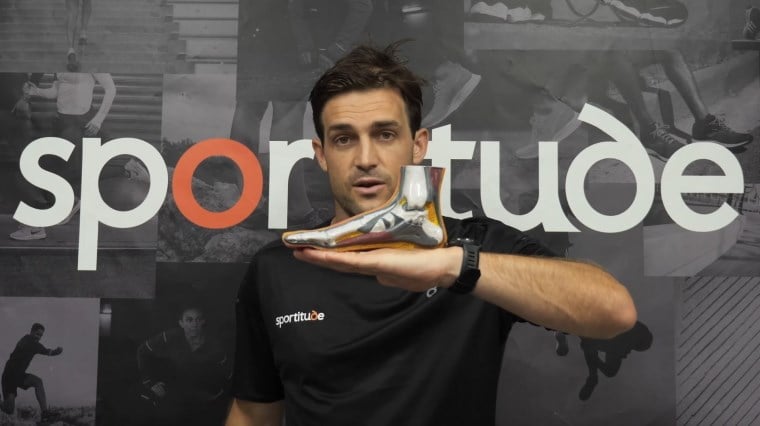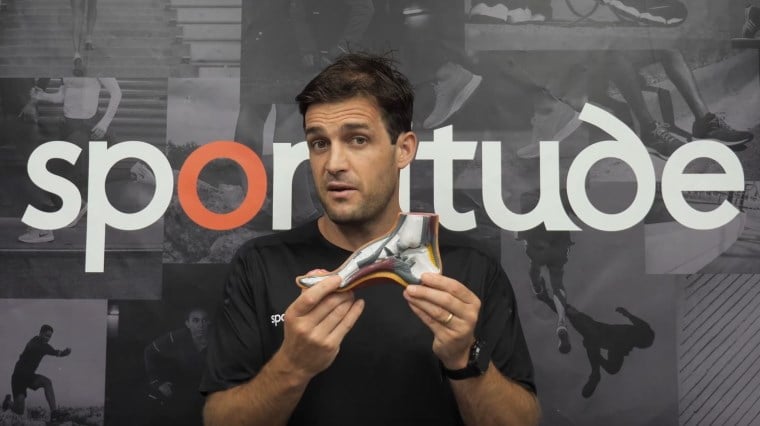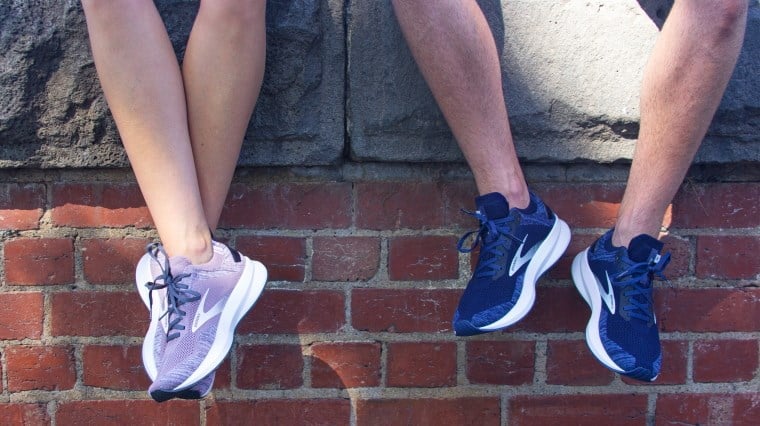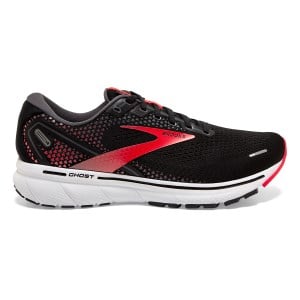What Type Of Running Shoe Is Best For Me?

Josh from Sportitude Running explains the differences between overpronation, under pronation (supination) and a neutral running gait in terms of not only your foot shape, but regarding your personal running biomechanics.
Choosing the best running shoes for you begins with the way you move from heel-to-toe. Understanding this movement data, especially if you've had the opportunity to consult a shoe fitting specialist, will help guide your running shoe selection to find the optimal level of support for your feet.
Check out Josh’s guide with full transcription below.
Hi guys, Josh here from Sportitude Running and today we're going to be doing a foot type discussion. We want to give you some information at home to help you identify what foot type you might be and then lead you into what shoes you should be selecting.
Technically there are three foot types. There's an overpronated foot type, neutral foot type and an under pronated or supinated foot type.
In today's review we're going to go through the three foot types and give you the information you need at home to make your shoe selection just that bit easier.
Overpronated Foot Type

We'll start off with the overpronated foot type first up. The reason we're starting off with that is because it is on average the majority of runners. The data that we get year in and year out suggests that around 65% to 70% of runners tend to favour that medial side or overpronate.
If an overpronated foot type was on a flat surface in a static position, the arch will be a little bit closer to the ground on that medial side. When this runner contacts the ground, whether heel first or midfoot to forefoot, there will be a transition from that lateral compression side on entry through to the medial side through midstance where the arch will collapse. The foot will then roll over to that medial side as it gets ready to transition to toe-off out of the gait cycle.
With an overpronated foot type we tend to look for shoes that have some form of medial support on the instep. Traditionally speaking if we go back several years, we'd be looking at running shoes that have some form of dual density or tri-density foam on that medial side. However, brands are ever so slightly changing the way they look at support systems.
GuideRails, blended support systems or some form of arch cradle or support on that medial side will cater for the overpronated foot type. The other thing we keep in mind as well, while I did talk about a foot type in a static position, a good running shoe shop like Sportitude Running will measure you through weight-bearing. We’ll look at you walking and running through that whole transition because how a foot looks in a static position can be a lot different to how it looks when it is weight-bearing which is vitally important.
See Josh's Top 5 Stability Shoes Of 2021 to find some of the best running shoes for overpronation. Click the product pages below to shop top stability shoes as we sprint into 2022 (recommendations only, based on cushioned running shoes).
We recommend booking a LiveFit shoe fitting service or seeking advice from our in-store shoe experts to advise you in your stability shoe selection.
Neutral & Mildly Overpronated Foot Type
When you walked into your favourite running store 10 years ago, it would almost be as if you were walking to a T-junction. You’d get to an intersection and the salesperson would identify what foot type you were. You'd go left if you happened to supinate, or you'd go right if you happened to pronate.
That's how shoe walls used to be laid out as well. There'd be your supportive shoe section, your under pronating/supinating shoe section and neutral which should sit in the middle.
Fast forward to where we are in 2022, there is a lot of shoes that sit in that middle and therefore it's important to know that specific foot types can run in a couple of different varieties of shoes.
As we touched on with the overpronated foot type that collapses in that arch area, there are a lot of neutral runners that have a static position that looks very similar to an overpronated foot type.
As this runner comes through heel to midstance in their midstance transition, you won't see as much favouritism towards the medial side. A lot of the pressure will be through the central part of the foot as it gets ready to transition through to the forefoot to then toe-off.
It's important to know that there are some neutral foot types that have quite a bit of space between the arch and the ground in a static position. However, the same thing occurs when this runner goes through midstance.
When they contact the ground, whether heel or midfoot, the pressure will still be through the central part of that foot. However, they will still see a little bit of that real estate between the arch and the ground. The arch will stay higher pitched through midstance before that foot gets ready to toe-off out of the gait cycle.
When we're talking about that neutral category, just like the terminology itself ‘neutral’ means consistent. There’s no tendency to favour the medial or lateral side. It’s consistent pressure through the central part of the foot. Therefore when brands execute neutral shoes, they don't want to be too heavily biased to the medial side or the lateral side to avoid interfering with the foot's natural motion or natural movement pattern.
See Josh's Top 5 Stable Neutral Running Shoes Of 2021 to find some of the best running shoes for neutral foot types and mild overpronators. Click the product pages below to shop top neutral shoes as we sprint into 2022 (recommendations only, based on cushioned running shoes).
Under pronated/Supinated Foot Type

Then we come to the last but not least foot type. The reason I've left this supinated foot type to the end of this review is because it's technically the minority of runners. The data which we touched on earlier was around 65% to 70% of runners overpronate. We're finding that less than 10% of runners supinate.
When this runner comes down and contacts the ground, whether heel, midfoot or forefoot striking, the pressure will tend to be on that lateral side of their gait. When this runner hits the ground and comes through to midstance, we'll see this foot type sit up quite high.
There’s quite a bit of space between the arch and the ground, and the pressure is on the lateral side of the shoe before the foot gets ready to then toe-off. Generally speaking, this foot type will toe-off more often than not from the third metatarsal and across.
Why is it important for brands to still execute shoes for the minority of runners? It's still very important because they need to have some form of engineering components to help assist these runners to be comfortable and assist these runners on their natural plane of movement.
If we went back 10 years ago, we would see brands provide a lot of flexibility through the forefoot. Nothing has really changed with regards to how supinators find themselves a running shoe today. It'll be a neutral shoe, however the geometry of the foam and the flexibility through that forefoot is going to dictate how a supinated foot would sit inside a running shoe and how it would perform through its whole transition.
The other thing that's important to know is if a runner did have a lot of arch support underneath the medial side and they are a supinated foot type, technically speaking to the rule of the book we would say that's not a good fit. However, there's still a percentage of runners that may have been running in running shoes like that for several years.
Exceptions to the ‘Rules’
The important thing to know is there are always going to be exceptions to the rules. For example, the runner that may have a supinated foot type but has been potentially using a supportive shoe for several years and has been absolutely fine.
Why would you go and take that person out of a supportive shoe and put them into a neutral shoe because the guidelines suggest they should be in a neutral shoe? As I touched on, there are always some exceptions to that rule and the same thing goes for an overpronated foot type.
If a runner with an overpronated foot type has been using a neutral shoe for several years and that runner has been A-OK - there's been no injuries, no soreness, no concerns for change - then you'd still keep them in a neutral shoe.
Orthotic Wearers
The other discussion point which we do sometimes touch on in our shoe reviews are orthotics. The same conversation goes with orthotics because again, generally speaking we'll put an orthotic inside a neutral shoe and keep some of the characteristics that the podiatrist would require to make sure this person can move with less pain and injury free through the entire gait cycle.
If there is a runner that's been using orthotics inside a supportive shoe and it's been A-OK there is nothing wrong with that, it's totally fine. Still stick with it and obviously seek advice from your podiatrist. I always recommend if you have an orthotic you should be getting them reviewed every 12 months on average. Of course that's a case by case situation, but if you had an orthotic for a few years it would certainly be worth going back to your podiatrist and having a conversation about what that orthotic is doing for you.
These are just guidelines. I've said that a few times now and if you are a runner that is experiencing some discomfort or soreness in a prescribed shoe that is technically supposed to work for your movement pattern, I would encourage you to get yourself clinically assessed, be it with your podiatrist, physiotherapist or whoever it is. Someone that has the ability to diagnose why you're getting sore and help prescribe a path back to good health so you can keep running and remain fit and healthy for the remainder of your training days.
The Wrap Up

In summary there are three foot types. We have the overpronated foot type which makes up for the majority of runners, being 65% to 70% of runners.
There are neutral foot types that don't tend to favour either medial or the lateral side. Then there is your under pronated or otherwise known as supinated foot types where the pressure is on the lateral side of the foot as it transitions through the gait cycle.
It's important to know when you go into your favourite shoe shop, you should make sure that you are being measured and assessed while you are moving in the shoe and especially moving in the activity that they're intended for.
If you just put your foot into a shoe and stand there or have a light walk around the shop, it's not going to give you any indication on how it's going to perform at running. Jump up on the treadmill, fingers crossed the store has a treadmill and you can have a jog and have a discussion with the shoe fitter about how this shoe performs for you.
Comfort is still key. You must make sure that you're nice and comfortable within your running shoes, but always remember there are exceptions to the rule. If you happen to be in a specific designer running shoe and it's working for you, stick with it.
However, if you've been prescribed a specific running shoe and you're trying to get over an injury or soreness and things still continue to be sore or new injuries pop up, we would encourage you to go and have a conversation with a clinician podiatrist, physiotherapist or whoever it is that can diagnose where your discomfort is coming from and help prescribe you back to good health.
Thanks for watching and we look forward to taking care of your shoe needs. See on the road and take care.
Happy running!
If you liked this, then you'll love:
Running Shoe Guide 1: What To Do When Your New Running Shoes Arrive
Running Shoe Guide 2: How To Break In Your New Running Shoes
Running Shoe Guide 3: How To Clean And Care For Your New Running Shoes

